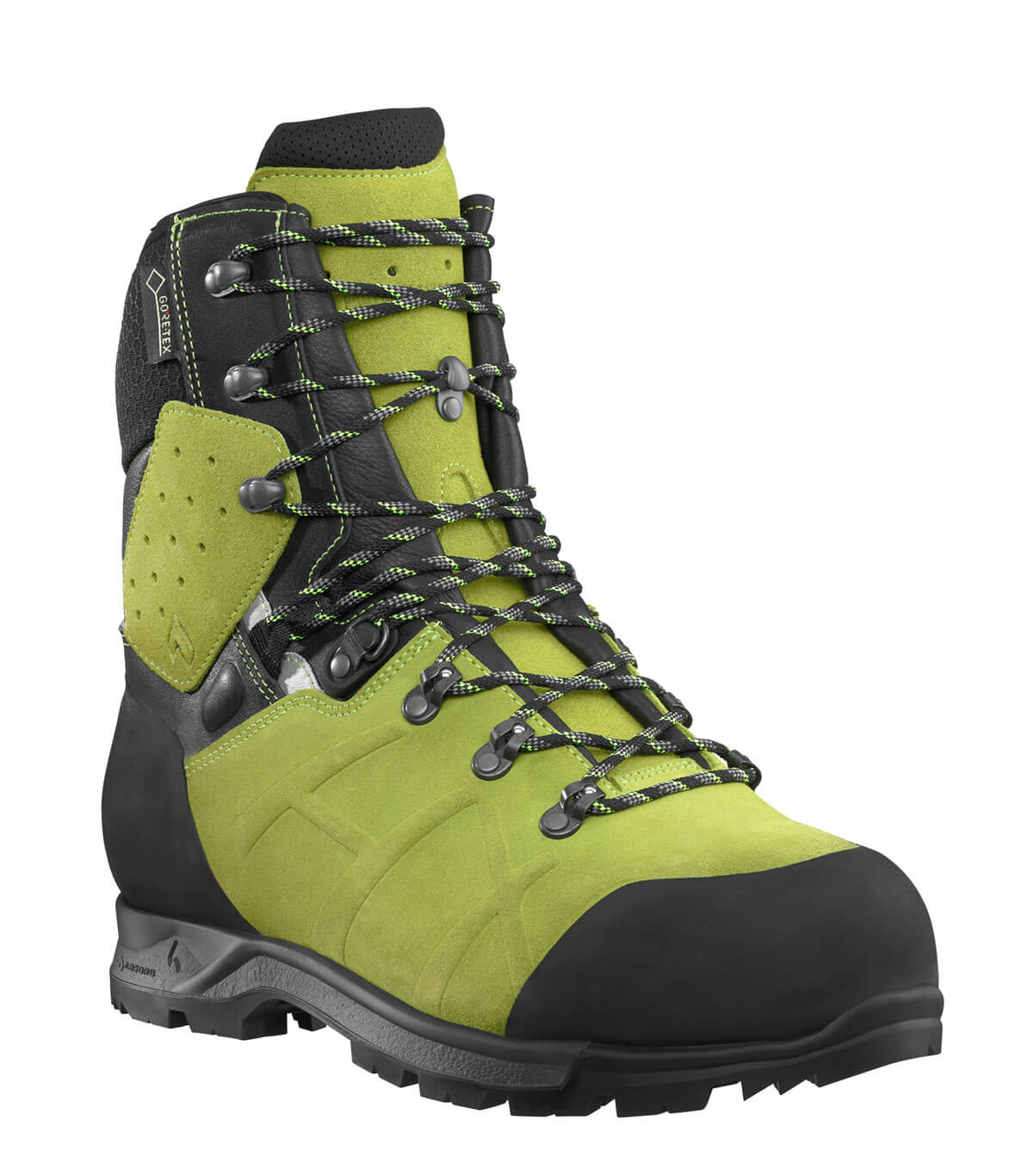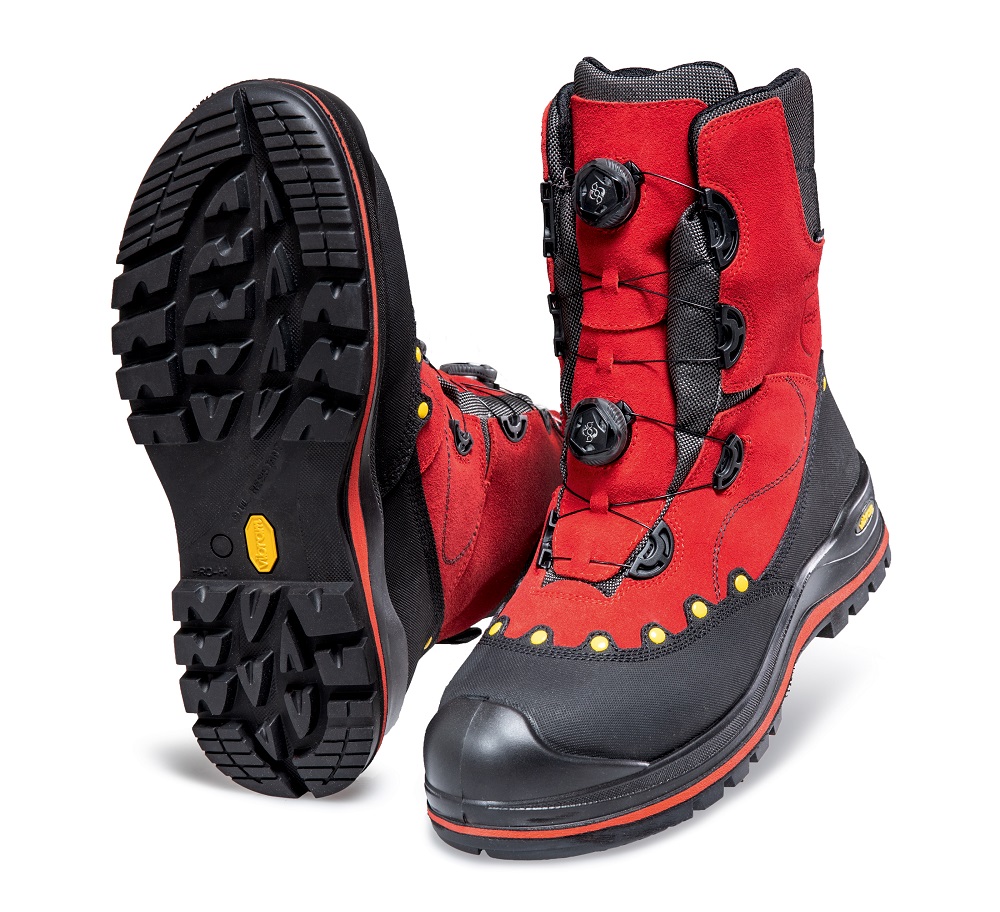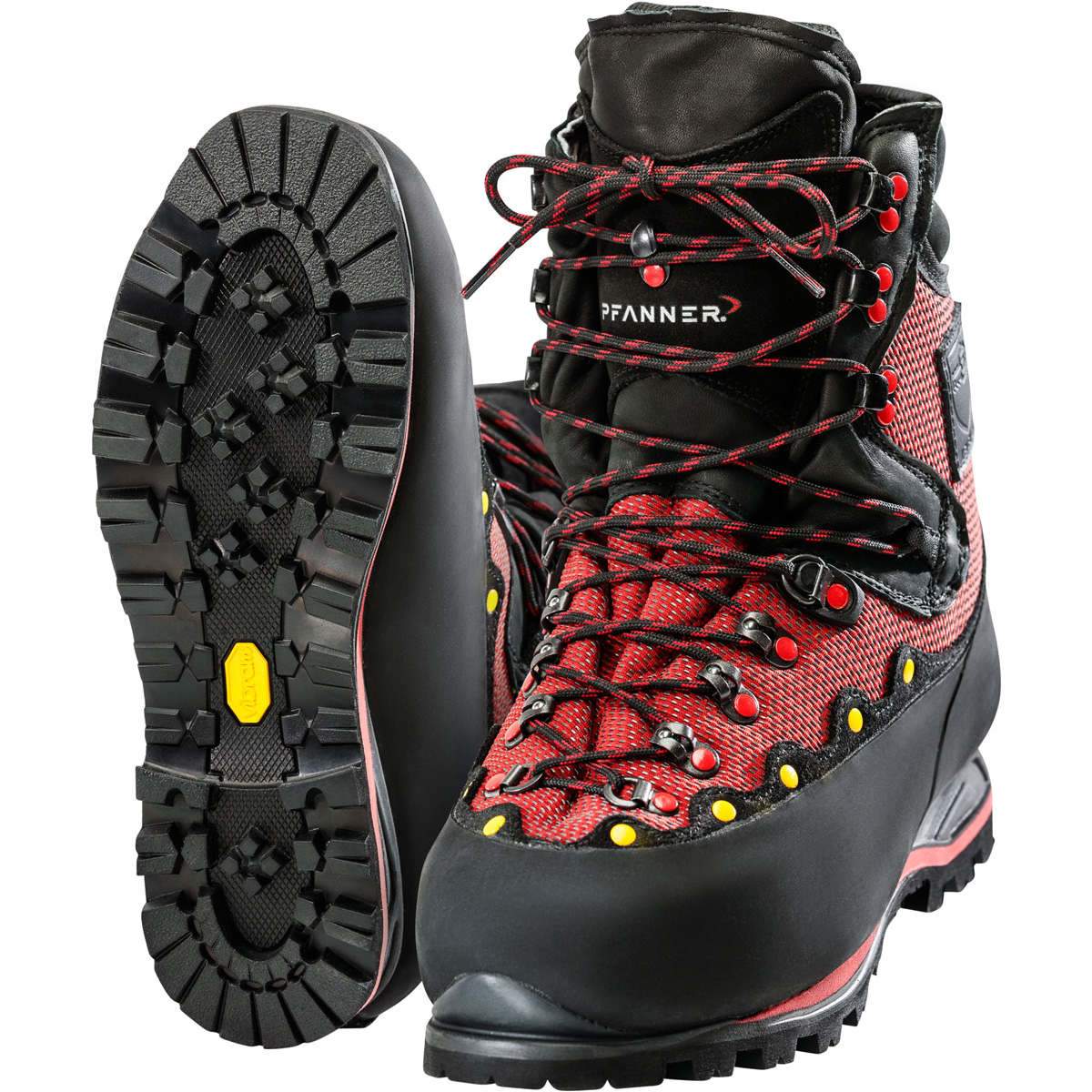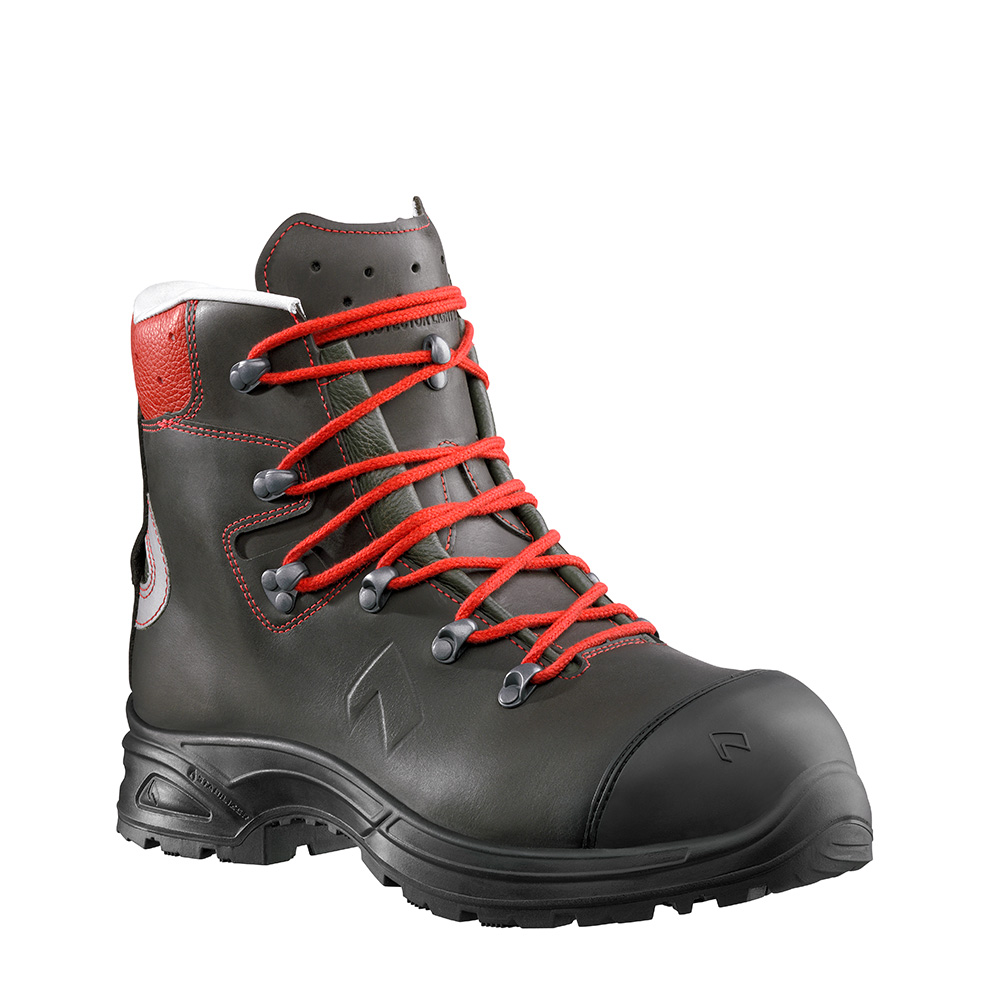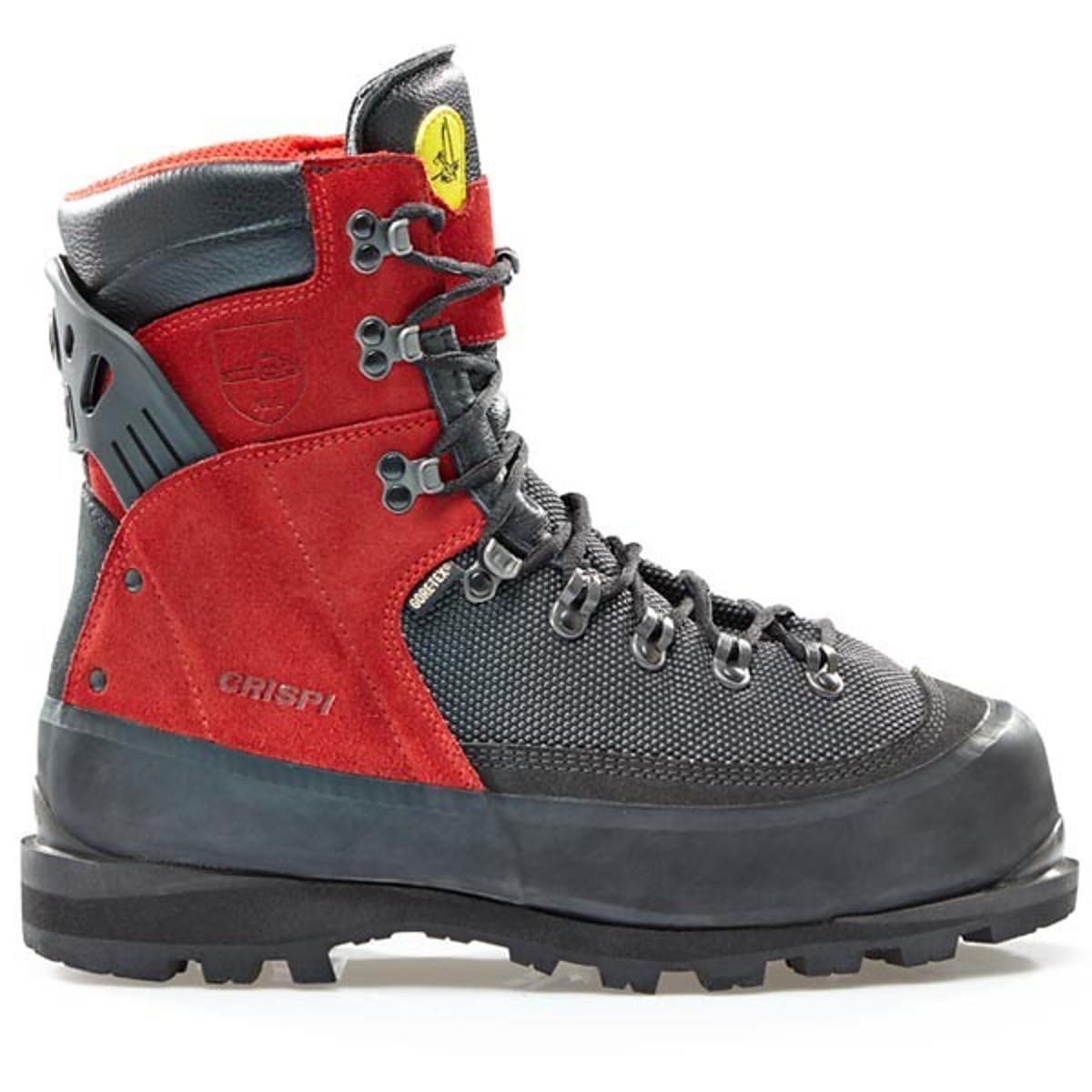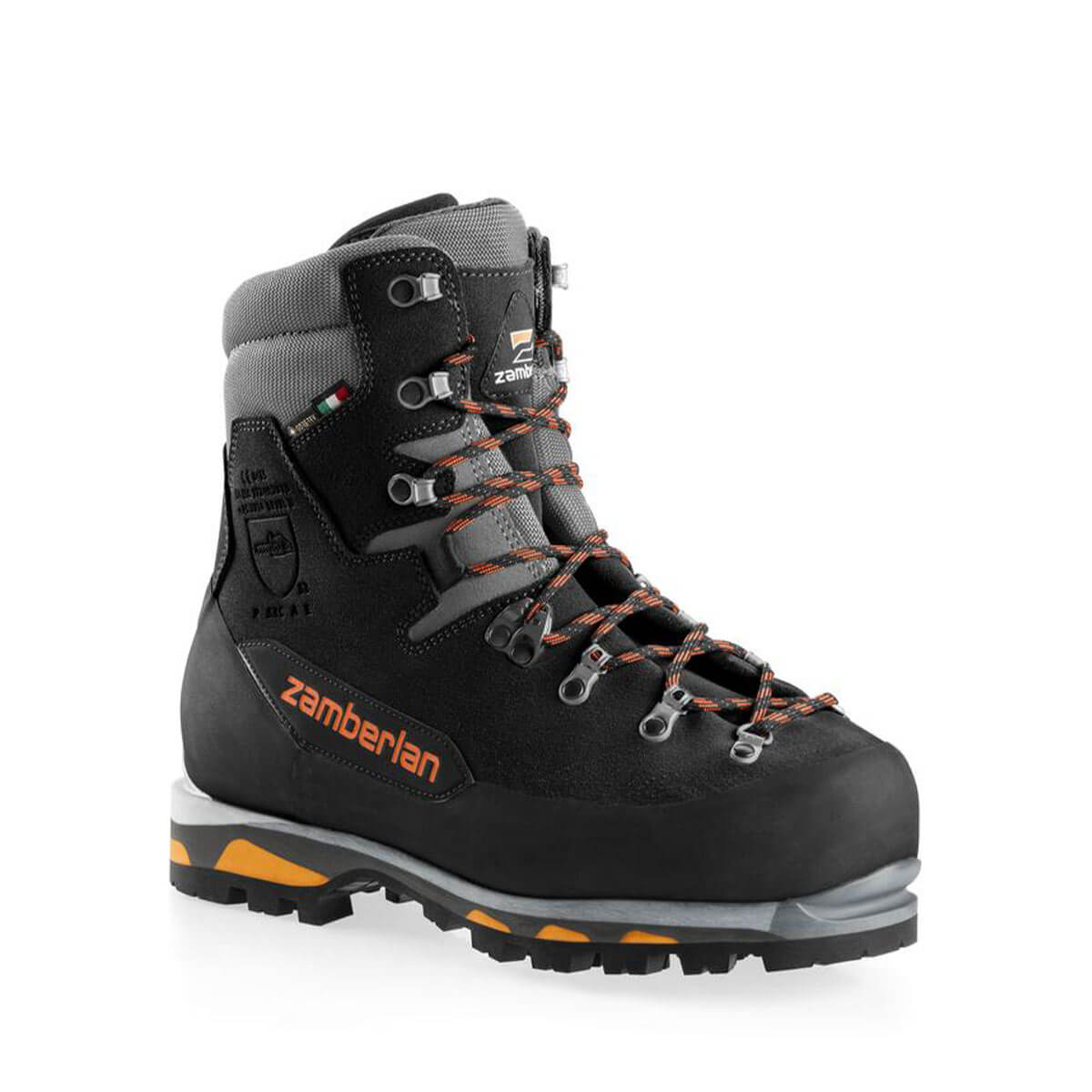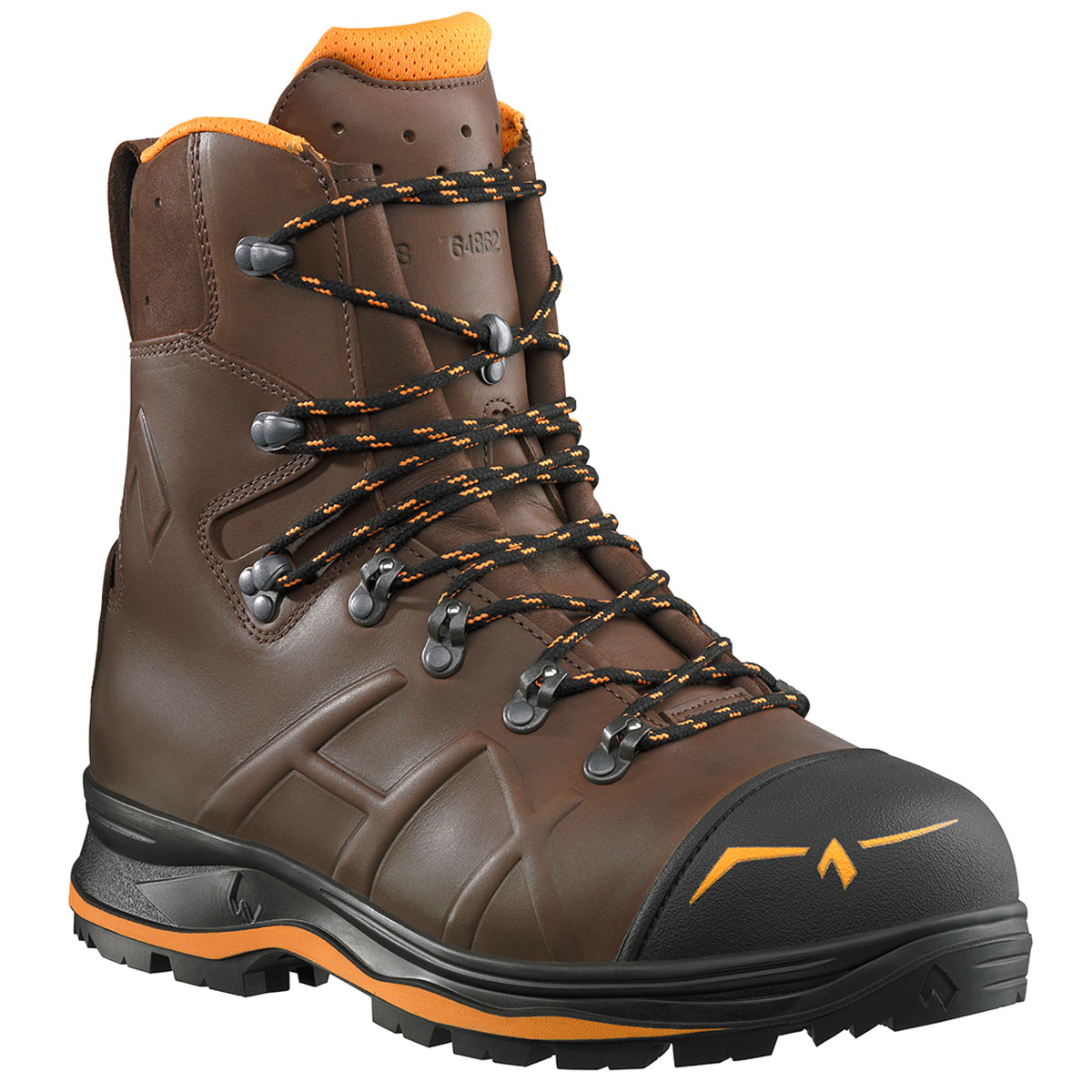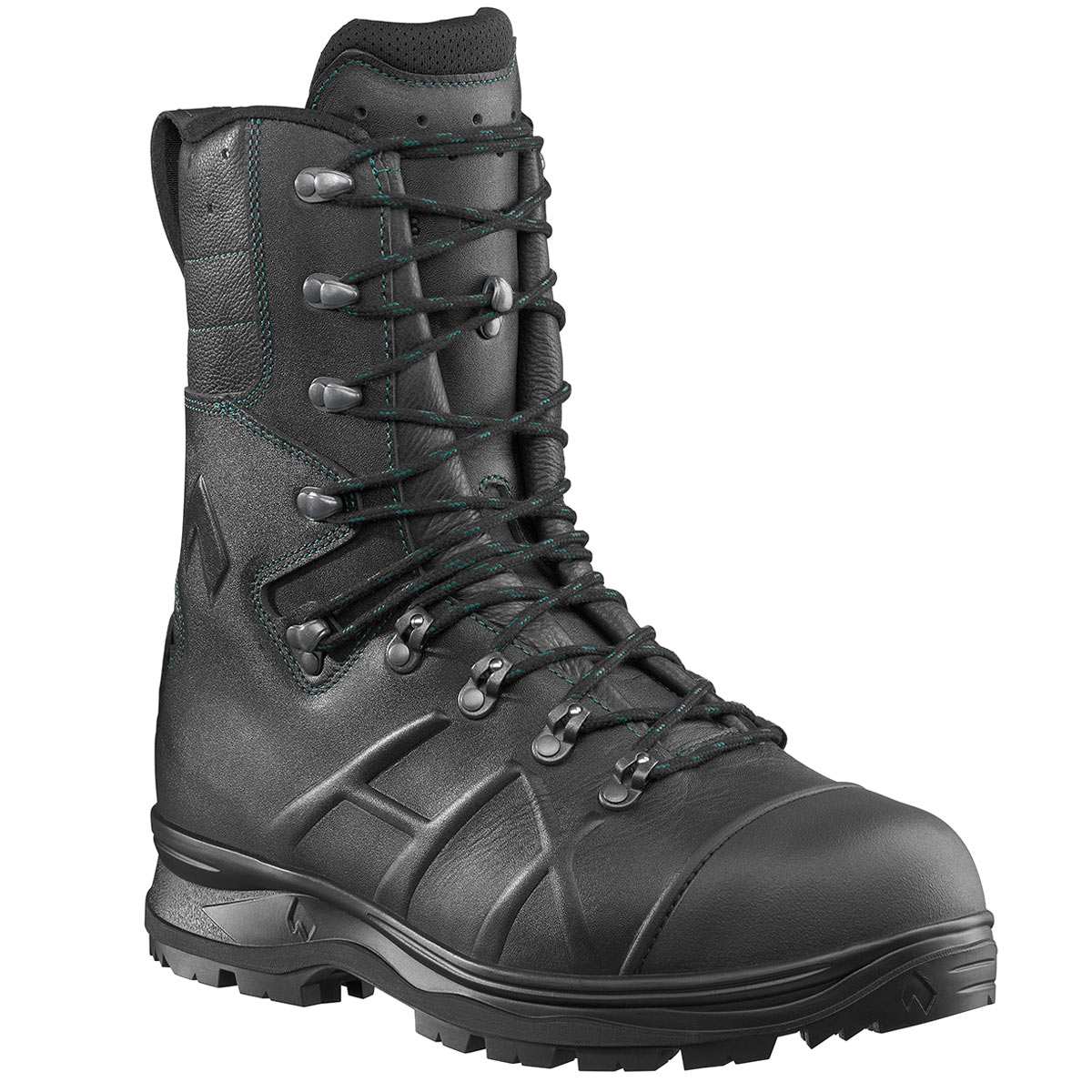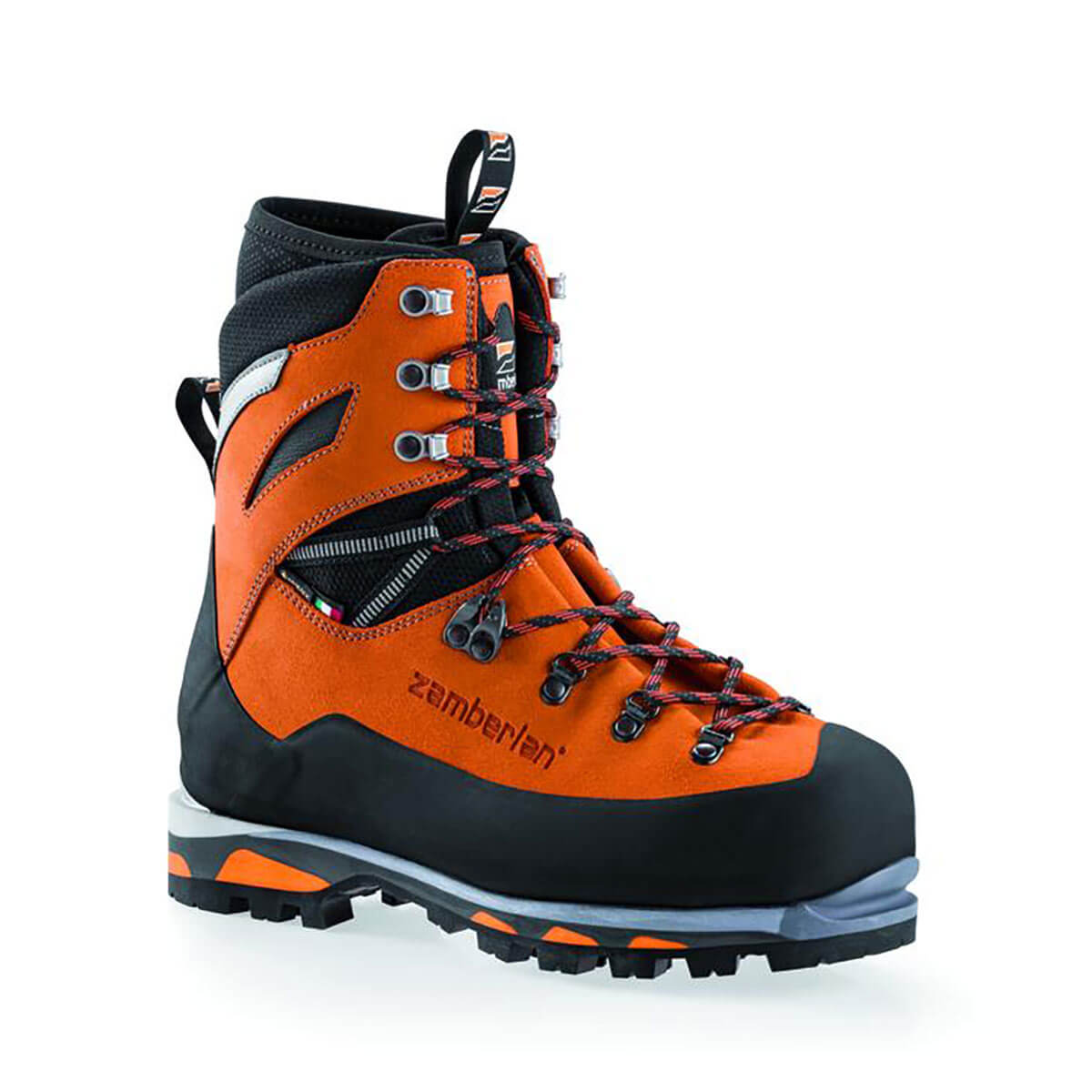Cut protection shoes - optimum safety in the forest
Good, stable, and durable cut protection shoes, with a long lifespan, are essential in forestry work, as they provide excellent protection against the chainsaw. Thanks to the integrated cut protection inserts, cutting injuries in the workplace can be reduced. They are a subcategory of safety shoes and are primarily used for cutting work in the forest. Cut protection shoes, which are part of the basic protective clothing, come in various versions. Leather shoes or leather boots are most commonly used. Manufacturers of high-quality shoes use smooth or nubuck leather. In forestry work, normal safety shoes are often insufficient because they lack cut protection inserts. The integrated toe caps would protect the toes in that area, but behind them, the foot is unprotected. Therefore, proper forestry shoes are necessary in the forest. Not only forestry workers but also climbers or arborists in urban services benefit from cut protection shoes or boots in various protection classes. Manufacturers of such shoes include Elten, Haix, Kox, Meindl, and Pfanner.
Before buying a shoe for forestry work, you should consider the intended use. Pay attention to the different requirements of your activities - especially the required cut protection class. Many cut protection shoes or boots have particularly durable upper materials like nubuck leather, and some also offer protection with a steel toe cap against falling wood pieces or other objects. A sufficient shaft height protects against unwanted twisting of the foot while working. Always be mindful of the direction in which your chainsaw is positioned.
The Protective Effect of Cut Protection Shoes
Cut protection shoes are part of the protective clothing for all forest and forestry workers. Besides the points mentioned earlier, the main focus is on protection against cutting injuries. For optimal protection, the protection class and chain speed are crucial. There are cut protection shoes and boots in the following classes (European standard DIN EN ISO 17249):
- Cut protection class 0 - the chain speed may be up to 16 m/s
- Cut protection class 1 - the chain speed may be up to 20 m/s
- Cut protection class 2 - the chain speed may be up to 24 m/s
- Cut protection class 3 - the chain speed may be up to 28 m/s
- Cut protection class 4 - the chain speed may be up to 32 m/s
All shoes are tested and certified by the Kuratorium für Waldarbeit und Forsttechnik e.V. (KWF) and the associated Forsttechnische Prüfungsausschuss (FPA). During the test, the forestry shoe is examined for the strength of the sole, among other things, or must prove the stability of the toe caps, and then receives a test seal.
Besides the above-mentioned protection classes, toe protection is important: In normal work shoes, this is often ensured by special toe caps. However, in forestry, other requirements must be met because the loads are even greater: Many forestry shoes and boots have toe caps made of steel, also known as steel toes. Thanks to these steel toes, which are tested according to DIN EN ISO 20345, 20kg heavy objects falling from a height of 1 meter are no problem and protect the toes from injuries.
Cut protection class 1 can already prevent many accidents, but the greatest protection is provided by cut protection shoes or boots of protection class 4. A chainsaw can reach very high speeds during operation. To provide effective cut protection, heavier protective clothing is needed, which, however, limits mobility and ergonomics. Too much weight and poor ergonomic properties lead to faster fatigue. Therefore, you must find a compromise between protective effect, wearing comfort, and mobility.
Other important features of cut protection shoes besides the respective protection class:
- penetration-resistant sole
- reinforced heel area for extra support
- waterproof and antistatic materials
- highly profiled outsole
- breathable inner lining
The Fit of Cut Protection Shoes is Crucial
To be on foot in the forest for hours, even in difficult terrain, the right footwear is of great importance. The footwear not only offers cut protection but also high wearing comfort to better protect against blisters at the end of the day. And the non-slip sole of the forestry boots or shoes provides extra grip on the challenging forest floor. An ergonomic footbed and sufficient shaft height contribute to a more comfortable day. With a flexible and non-slip sole, forestry boots or shoes offer extra grip on the difficult-to-navigate forest floor.
Whether it's cut protection shoes or boots, both provide optimal support for the foot, and the boots protect the ankle with the shaft. A closed area around the heels absorbs energy. Thanks to the high shoe shaft, a forest worker's foot is better supported, and twisting is prevented. With your forestry shoes, you can climb over any stick, stone, or even tree trunk in the forest without fearing a sprained ankle every time. The strong and non-slip sole also protects against sharp objects in the forest.
The breathability of cut protection shoes provides additional comfort through a special membrane, keeping feet dry even under heavy use thanks to inner linings like GORE-TEX®. This breathable membrane is also often waterproof. The waterproofness is guaranteed by pores, whose diameter is many times smaller than that of a water droplet. At the same time, the pores are large enough to effectively transport sweat away. This ensures protection against any moisture inside and outside the shoe. Nothing is more unpleasant in forestry work than sweaty feet, which partly distract our attention and thus pose an additional danger. Conveniently, forestry shoes are often particularly easy to care for.
So, when buying, make sure the shoe fits well on the foot and check the manufacturer's size charts. The foot should not have too much room in the shoe, so you may need to deviate from your usual shoe size.
Conclusion: Well-Equipped for the Forest with Cut Protection Shoes
With the right footwear, you are ready for the forest. Cut protection shoes with sufficient shaft height and a seal of approval from the Kuratorium für Waldarbeit und Forsttechnik e.V. (KWF) are the ideal companions in the forest if you regularly work with chainsaws or other heavy equipment. A penetration-resistant midsole prevents sharp or pointed objects from penetrating. To determine the ideal protection class, you should carefully define your requirements and the area of use. Also, pay attention to the support in the shoe and the wearing comfort. A closed area around the heels not only ensures adequate protection but also contributes to the shoe's durability. Additionally, breathability should be present, and the shoe should have a water-repellent or even waterproof membrane, so your feet remain dry during cutting work. A highly profiled outsole should also facilitate the choice of the right shoe, alongside the mentioned cut protection.


